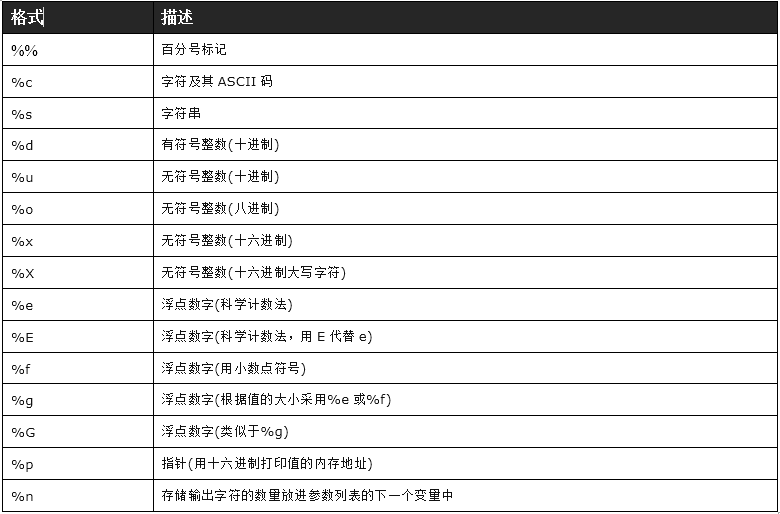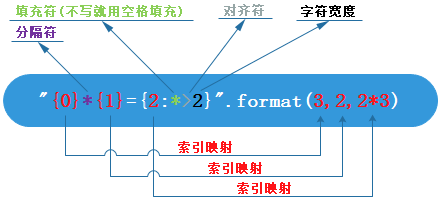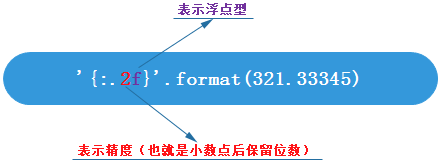Python3 字符串格式化
字符串的格式化方法分为两种,分别为占位符(%)和format方式。占位符方式在Python2.x中用的比较广泛,随着Python3.x的使用越来越广,format方式使用的更加广泛。
一 占位符(%)

%d
实例(Python3.0+):
age = 29
print("my age is %d" %age)
#my age is 29
%s
实例(Python3.0+):
name = "makes"
print("my name is %s" %name)
#my name is makes
%f
实例(Python3.0+):
print("%6.3f" % 2.3)
#2.300
print("%f" %2.3)
#2.300000
二 format方法
位置映射

实例(Python3.0+):
print("{}:{}".format('192.168.0.100',8888))
#192.168.0.100:8888
关键字映射

实例(Python3.0+):
print("{server}{1}:{0}".format(8888,'192.168.1.100',server='Web Server Info :'))
#Web Server Info :192.168.1.100:8888
元素访问


实例(Python3.0+):
print("{0[0]}.{0[1]}".format(('baidu','com')))
#baidu.com
填充对齐
- ^、<、>分别是居中、左对齐、右对齐

实例1(Python3.0+):
print("{0}*{1}={2:0>2}".format(3,2,2*3))
#3*2=06
print("{:*^30}".format('centered'))
#***********centered***********
实例2(Python3.0+):九九乘法表
for i in range(1,10):
a = 1
while a <= i:
print("{0}*{1}={2:0>2}".format(a,i,a*i),end="\t")
a +=1
print()
"""
1*1=01
1*2=02 2*2=04
1*3=03 2*3=06 3*3=09
1*4=04 2*4=08 3*4=12 4*4=16
1*5=05 2*5=10 3*5=15 4*5=20 5*5=25
1*6=06 2*6=12 3*6=18 4*6=24 5*6=30 6*6=36
1*7=07 2*7=14 3*7=21 4*7=28 5*7=35 6*7=42 7*7=49
1*8=08 2*8=16 3*8=24 4*8=32 5*8=40 6*8=48 7*8=56 8*8=64
1*9=09 2*9=18 3*9=27 4*9=36 5*9=45 6*9=54 7*9=63 8*9=72 9*9=81
"""
精度设置

实例(Python3.0+):
print("{:.3f}".format(2.1415))
#2.142
print("{:.10f}".format(3.1415))
#3.1415000000


 浙公网安备 33010602011771号
浙公网安备 33010602011771号